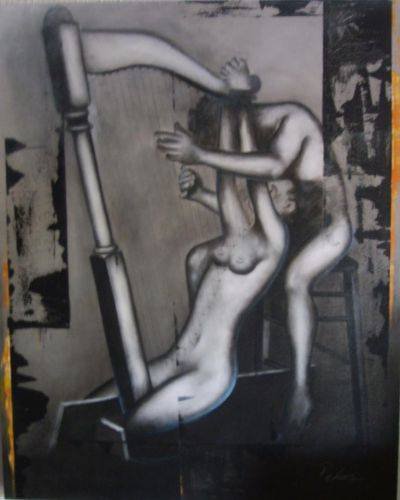J.L. Austin
Just the title of J.L. Austin’s work, one of this week’s readings, is already saying something of the project which will be undertaken in the text to follow. The title is “How to Do Things with Words.” With this title I start thinking of a type of map; that is to say, that there is a map or a chart of words and what they will materially produce. In essence, what I am trying to say is that there is a physical, a material aspect, or result, of using a word; in a valid atmosphere of course; and Austin is going to divulge this information because this is not in general know. If we can ‘do’ things with words, there is a certain materiality to them; they are tangible. If there is something material than there is a bond, a direct link that presupposes no change or a possible dissociation. There is a right and wrong way of doing the ‘things’ with words. The wrong way is cast out of any proper value because it does not follow the rules, the right way, or the ‘truth’; the referent.
The theory he develops is, at least the way I see it, and perhaps a bit condition by what I understood in Derrida’s critique (I will not discuss this here), more or less how I just explained my view of the title. The big word in this article, excerpt of his book, is “performative”. He describes performative utterances, and their validity, as being conditioned by material conditions outside of the words. ‘I write’ is valid right now because I am performing the act of writing. I n this case I have had a successful performative act. If am speaking to a friend and say, “Yeah, I write,” I have had an unsuccessful performative act, according to Austin that utterance cannot be described as ‘saying anything’; it is a misfired performative act. There are certain infelicities affecting the assertion to my friend. If a judge declares me ‘guilty’ inside of a court room there is no question of whether that is true or false: there is only one outcome, that that was a successful performative utterance because everything material to it happened in the way it was supposed to. If the same judge judges me on the street, and says ‘You’re guilty’, there has been, again, an unsuccessful performative act. But there is also the possibility that a friend of mine says ‘You’re guilty’, and like a judge, slams a gavel. This is a parasitic event on language. This is outside of ordinary language. Austin doesn’t really want to talk much about that.
Derrida & Searle
I probably did not understand all the concepts in Jacques Derrida’s articles we read this week; the main one being ‘Signature Event Context’. I did understand although that there is a very tough intellectual battle going on that John R. Searle starts with Derrida by basically saying in his whole essay, basically what he said specifically to one of Derrida’s arguments: “the answer is a polite but firm, ‘No, it isn’t true.’”. Searle, although it seems, has effectively argued in favor of Austin; this is because he thinks to have very much discovered the true intentions of Austin and the true intentions of Derrida, and Derrida for him is wrong because he misunderstood, could not figure out the true intentions, meaning, of Austin. I will try and look at some of these concepts.
It seems Jacques Derrida is working with, or coming from the perspective of language and signification only on that plane more than Austin is pretending to do. I wouldn’t venture to say that the arguments are flawed from the get go because they are working on concepts that have nothing to with each other. But it can seem that they are indeed working two different realms of language. I will quote a line by Derrida: “He [Austin] then attempts to justify, with nonlinguistic reasons, the preference he has shown in the analysis of performatives… in the final instance, is the reference made therein to what Austin calls the source.” (19). The source is also known as the origin, the author, the referent, or the context (at least that is how I think Derrida uses them). In deed Austin is working, as I proposed in my post for Austin, with a material that directly conditions the validity or meaning of words (remember he said that a performative was not simply to say something but also to do something, be validated by a situation). This here is the fundamental divergence that Derrida takes from Austin’s proposition. He talks about meaning as supplementary. It is precisely Derrida’s project to create a distance from a source, from a referent because that, he says, limits the possibilities of language. Searle, in his response, limits his arguments to basically saying to Derrida that his close reading of Austin was not a correct interpretation. When Searle apposes Austin’s notion of repeatability of writing, he focuses on the material aspect of the reproducibility of a book. This, now in my reading of Derrida, is not what Derrida had in mind when he talked about writing as iterable.
